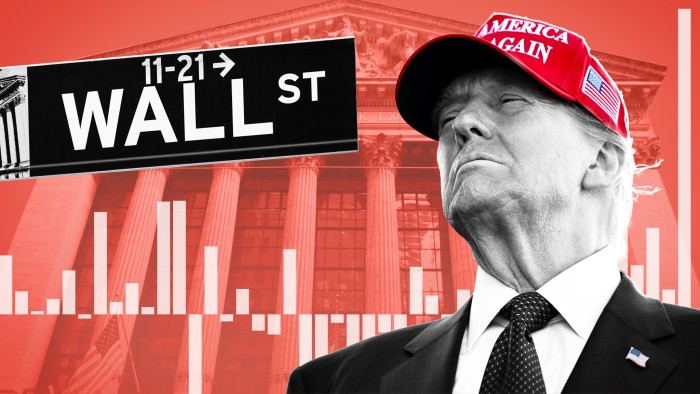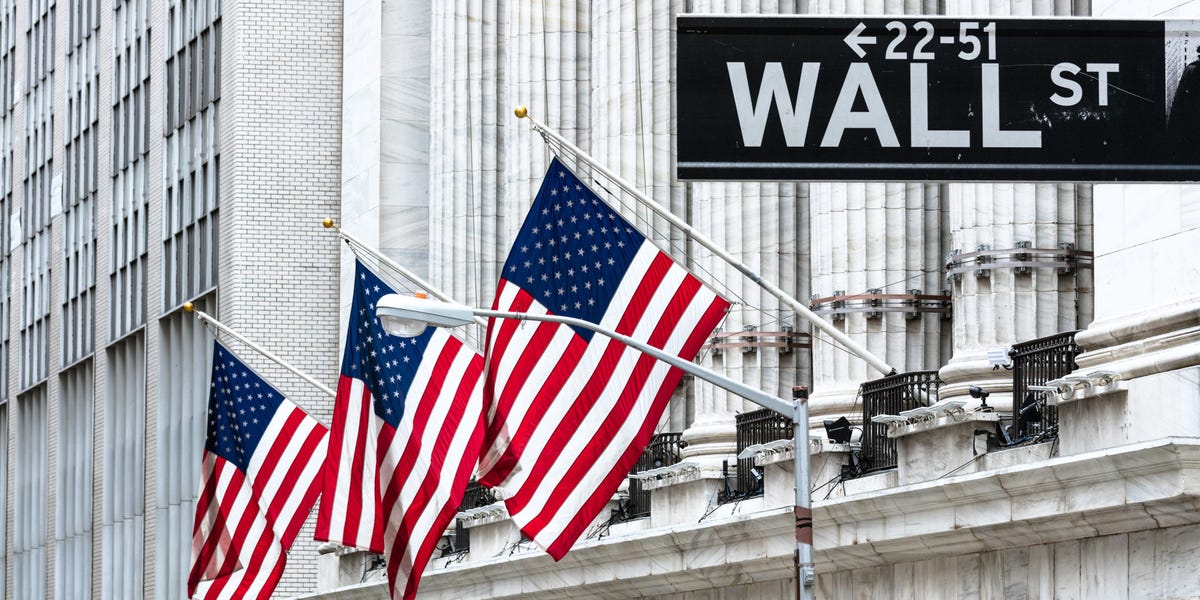The $140 Billion Surge: Understanding the Post-Trump Stock Fund Influx and Its Implications
The aftermath of Donald Trump’s election victory in 2016 saw an unprecedented financial phenomenon: a massive $140 billion flowed into U.S. stock funds. This surge, often referred to as the “Trump Rally,” raised important questions about investor sentiment, market dynamics, and the broader economic landscape. The scale of the influx was not only a striking endorsement of the new administration’s policies but also reflected a shift in global financial trends that extended far beyond the political sphere.
In this article, we will examine the factors behind this substantial inflow, analyze its potential long-term implications on the U.S. stock market, and explore how this trend may offer insights into future market behavior. We’ll also discuss broader economic and geopolitical considerations that could influence stock market movements in the years following such a surge.
Understanding the $140 Billion Influx
When Donald Trump won the 2016 presidential election, the financial markets responded with a sharp increase in investment. In the wake of his victory, U.S. stock funds witnessed a record-breaking influx of $140 billion. This surge was not a mere response to election results but rather a reflection of investor confidence in the pro-business policies anticipated from the new administration. Factors such as tax reform, deregulation, and an overall favorable stance towards corporate America spurred optimism about the future of the economy and the stock market.
Key Drivers Behind the Influx
Several factors contributed to this dramatic spike in investments:
- Corporate Tax Cuts and Deregulation: Investors were optimistic about Trump’s promises to cut corporate taxes and reduce regulatory burdens. The Tax Cuts and Jobs Act of 2017, which lowered the corporate tax rate from 35% to 21%, played a central role in boosting investor sentiment.
- Pro-Business Policies: Trump’s administration signaled support for traditional industries like energy and manufacturing, which provided a sense of security for investors seeking favorable conditions for growth.
- Market Expectations of Economic Growth: With plans to implement infrastructure projects and promote job creation, there was widespread belief that the U.S. economy would experience significant growth under the new administration.
- Global Financial Instability: International markets, especially in emerging economies, faced uncertainties, prompting some investors to view U.S. assets as a safe haven.
The immediate aftermath of the election saw the U.S. stock market climb, with major indices like the S&P 500 and the Dow Jones Industrial Average posting record highs. This was seen as a sign of investor confidence in Trump’s economic policies, signaling a bullish outlook for U.S. equities.
Investor Sentiment: A Double-Edged Sword
While the $140 billion surge into U.S. stock funds was a positive development, it also raised questions about the sustainability of such a rally. The influx of funds came amid a period of heightened market volatility and shifting global economic trends. While investor sentiment was initially positive, some analysts raised concerns about the long-term impact of such concentrated optimism in the stock market.
Short-Term Boost vs. Long-Term Stability
In the short term, the surge was undoubtedly beneficial. U.S. companies benefited from lower taxes, and many saw their earnings increase as a result. Stock prices soared, fueled by investor enthusiasm about Trump’s pro-business policies. However, the question remained: could this trend be sustained, or was it merely a temporary boost driven by speculative optimism?
While the initial rally was fueled by promises of tax cuts and deregulation, critics argued that it was also exacerbated by the overvaluation of stocks. Many companies experienced stock price appreciation without corresponding growth in fundamental business performance. This created concerns about a potential market correction if the anticipated economic benefits of Trump’s policies did not materialize as expected.
Geopolitical and Economic Risks
In addition to domestic policy considerations, there were broader geopolitical and economic risks at play. The Trump administration’s “America First” approach to foreign policy, characterized by trade tariffs, withdrawal from international agreements like the Paris Climate Accord, and increased tensions with traditional allies, created uncertainty in global markets. These risks could potentially dampen the investor confidence that had initially driven the market surge.
Furthermore, rising concerns over inflation, interest rates, and the U.S. federal deficit began to temper the optimism surrounding Trump’s economic policies. The Federal Reserve’s actions to gradually raise interest rates in an effort to combat inflation signaled a shift towards tighter monetary policy, which could potentially lead to a slowdown in economic growth.
Beyond the Trump Effect: The Role of Institutional Investors
While the surge of $140 billion is often attributed to the euphoria surrounding Trump’s victory, it is also important to consider the role of institutional investors in this dramatic influx. Hedge funds, mutual funds, pension funds, and other large institutional investors play a significant role in shaping market trends. These investors tend to act on long-term forecasts, making strategic decisions based on the broader economic landscape rather than short-term political developments.
The Influence of Institutional Money
Institutional investors have access to vast pools of capital, and their decisions can have a far-reaching impact on market dynamics. The Trump election win, combined with a favorable regulatory environment, likely encouraged institutional investors to allocate more funds to U.S. equities. This influx of institutional capital helped to further propel stock prices upward.
Moreover, large institutional players are often better equipped to absorb market risks and benefit from opportunities presented by regulatory shifts. Their participation in the market often helps to stabilize the effects of volatility by injecting liquidity into the market, providing a buffer against short-term fluctuations.
Market Trends and the Long-Term Outlook
While the $140 billion surge provided a short-term boost, the long-term outlook for the U.S. stock market remains influenced by a range of factors. Among these are the health of the global economy, interest rate trends, and evolving investor sentiment towards political and economic uncertainty.
One crucial aspect that has emerged post-Trump is the market’s increasing reliance on technological innovation. The rise of sectors such as artificial intelligence, biotechnology, and clean energy continues to shape investor strategies, and these areas will likely continue to dominate investment flows moving forward.
Additionally, future political shifts could also play a critical role. A change in leadership or a shift in policy priorities could impact investor confidence, potentially altering the trajectory of market performance. Investors are likely to remain cautious, balancing optimism with an awareness of the risks posed by global economic instability and domestic policy changes.
The Implications for Future Market Behavior
The influx of $140 billion into U.S. stock funds following Trump’s election victory offers valuable insights into future market behavior. It demonstrates how political events, particularly those involving significant shifts in economic policy, can influence investor sentiment and drive substantial capital inflows. However, it also highlights the importance of market fundamentals and the risks associated with speculative investments.
Looking ahead, the key takeaway for investors is the importance of diversification and a long-term investment strategy that accounts for both political and economic uncertainties. While market surges driven by political events can offer short-term gains, sustained growth depends on solid economic fundamentals, technological innovation, and global market stability.
Conclusion: The Enduring Legacy of the $140 Billion Surge
The $140 billion surge into U.S. stock funds post-Trump victory serves as a reminder of the powerful influence that politics and policy can have on financial markets. This unprecedented influx of capital, driven by investor confidence in Trump’s pro-business agenda, reshaped the market landscape in the years that followed. However, the long-term effects of this surge are still unfolding, and future market behavior will likely be shaped by a combination of political, economic, and technological factors.
As we continue to navigate an unpredictable global economic environment, investors must remain agile and forward-thinking, understanding that while political events can cause short-term market shifts, long-term success depends on a diverse and resilient investment strategy.
For more insights on market trends and financial analysis, explore this article on investment strategies in the face of political uncertainty.
For up-to-date information on stock market movements, visit Bloomberg.
See more CNBC Network



